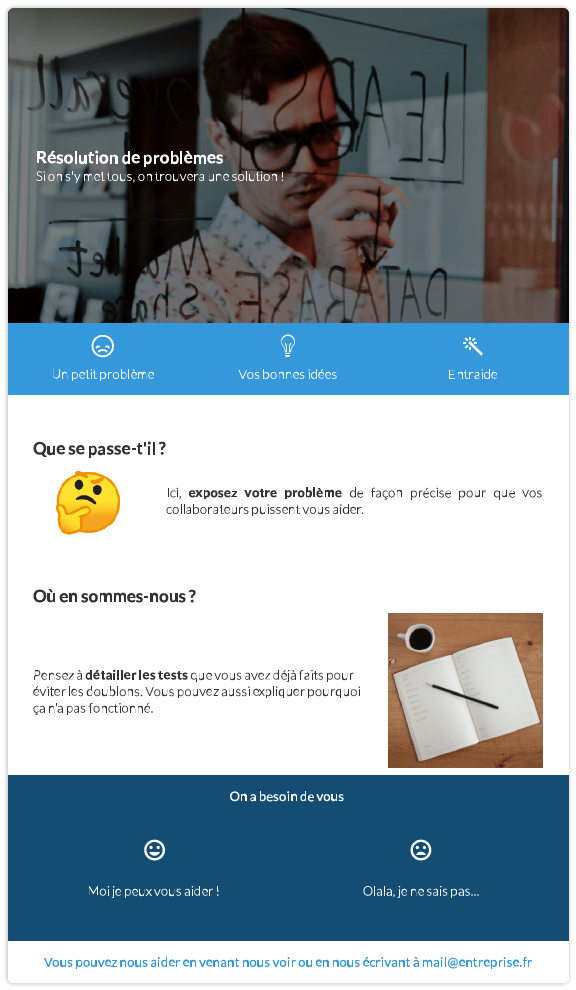30 Jul

A dissatisfaction on a specific point, non-compliant products or even a broken down elevator… In a company, it happens very frequently that we face problems, whether it is in the context of a project or daily life at the office.
To respond to these problems, a methodology exists: problem solving!
👉 Discover the “Project Management” template pack
Problem solving, quesaco?
Problem solving is the process of defining your problem; determining the cause or causes; identifying, prioritizing and selecting one or more solutions; and implementing a solution in the best possible way.
Problem solving is therefore a 4-step method that allows to “tackle” at best a given problem.
The 4 steps:
- Define the problem(s)
- Analyze the cause(s)
- Search for solutions
- Implement the chosen solution
Define the problem(s)
Here, the objective is to define the problem(s) as clearly as possible in order to fully understand the situation. It is important to remain as objective as possible and not to confuse facts and opinions. You must try to define the problem and not its “symptoms”. For example, “the product is unsatisfactory” is a problem while “there is customer dissatisfaction” is a symptom.
To help you in this task use the WWWWWH, the WWWWWH allows you to precisely define and analyze the different components of a subject by taking into account all the elements that have an influence on it.
The aim is to define
- What’s this all about?
- Who’s involved?
- Where is this happening?
- When?
- And how?
For example
- What’s this about? Elevator’s broken down.
- Who is concerned? The whole building A
- Where is it taking place? In the lobby of building A When since Thursday morning
- And how? It just doesn’t work anymore.
Analyze the cause(s)
Look for all possible causes and analyse them precisely to find out which cause leads to which effect.
For example if the problem is that the product arrived broken the causes may be the following:
- The product was too fragile
- The packaging was insufficient
- The transport was too brutal
- Search for solutions
Look for possible solutions, interview all your employees. Once the solutions have been found, prioritize them and choose the best one.
For this you can create a decision matrix
List the different solutions
Choose the criteria that matter to you (cost, duration, ease of implementation of the solution)
And put your possible solutions and the criteria that matter into a matrix. This can help you choose the right solution.
Implement the chosen solution
Apply the chosen solution, but don’t stop there! Follow up and evaluate how the problem has been solved, this will help you to improve for future times!
There is a Cocoom template for that!
The other articles on the templates of the “Project Management” pack:
Update on problem solving






